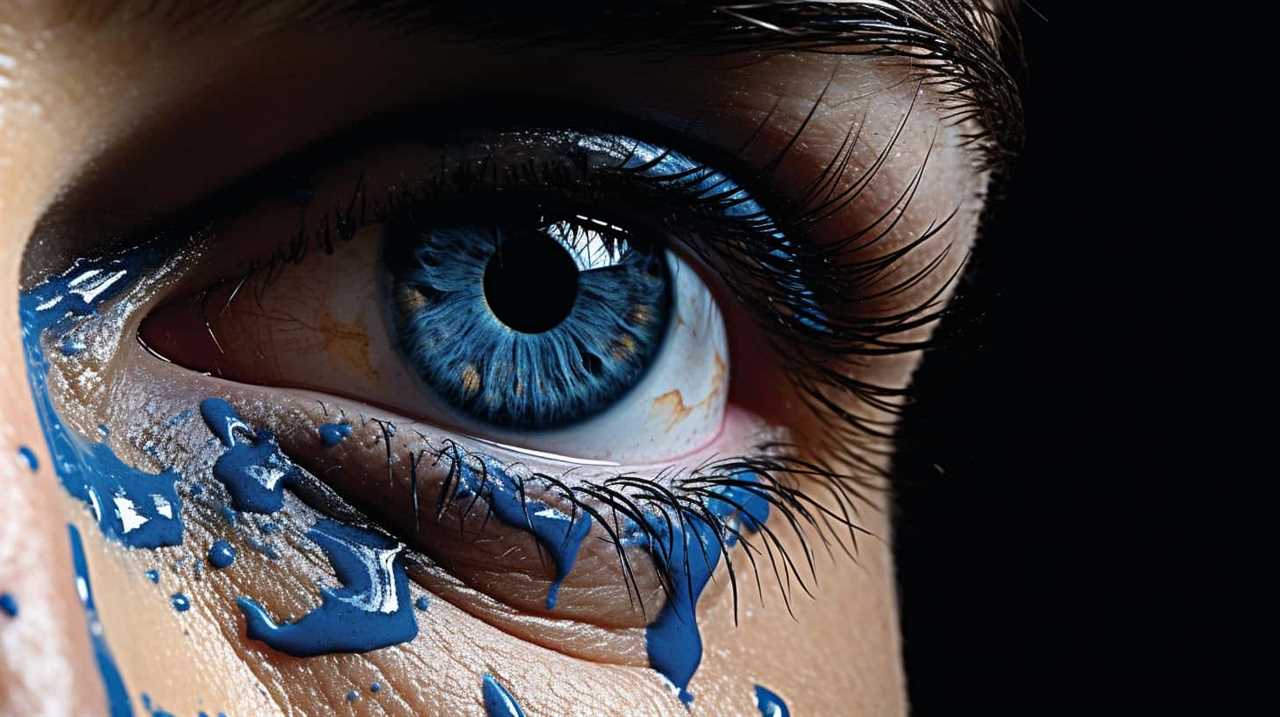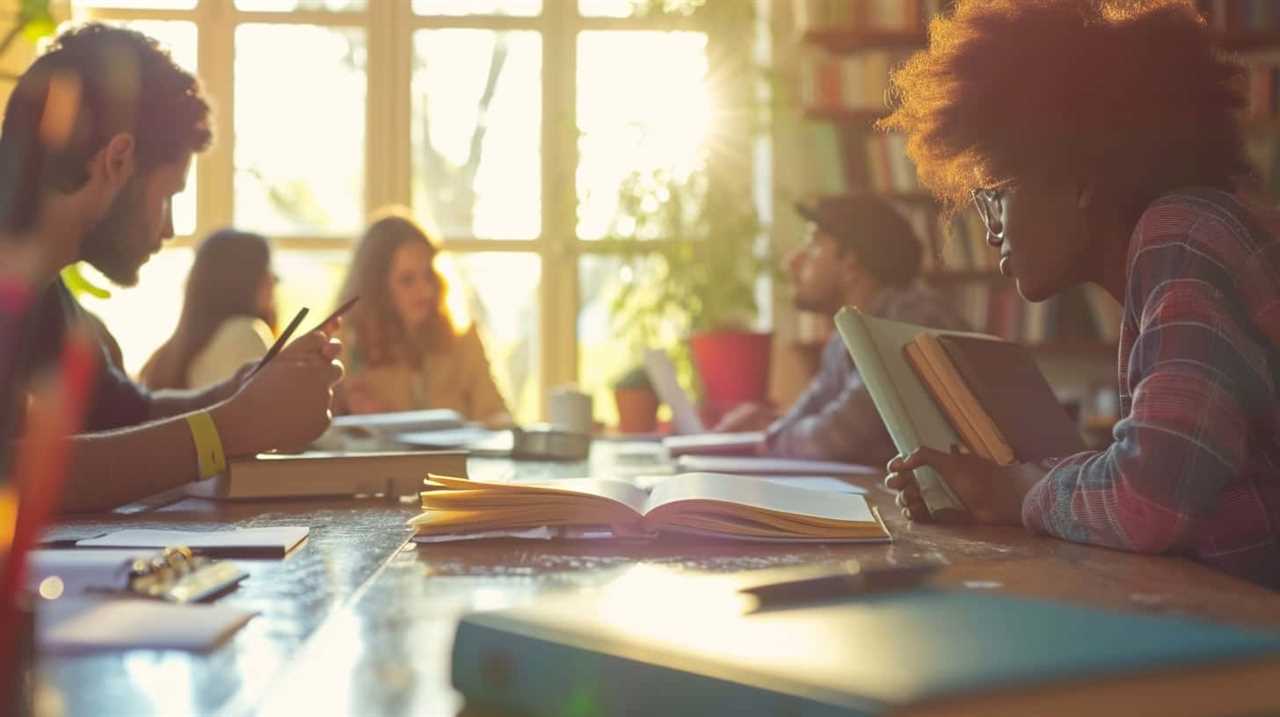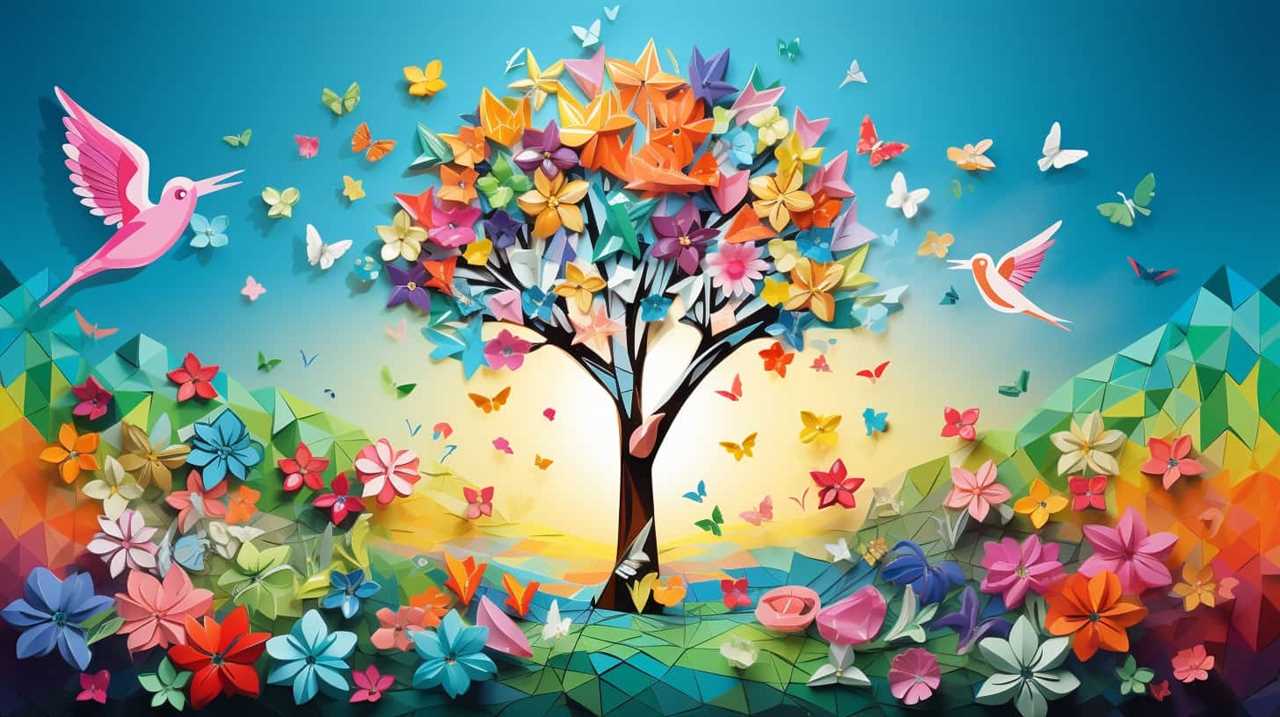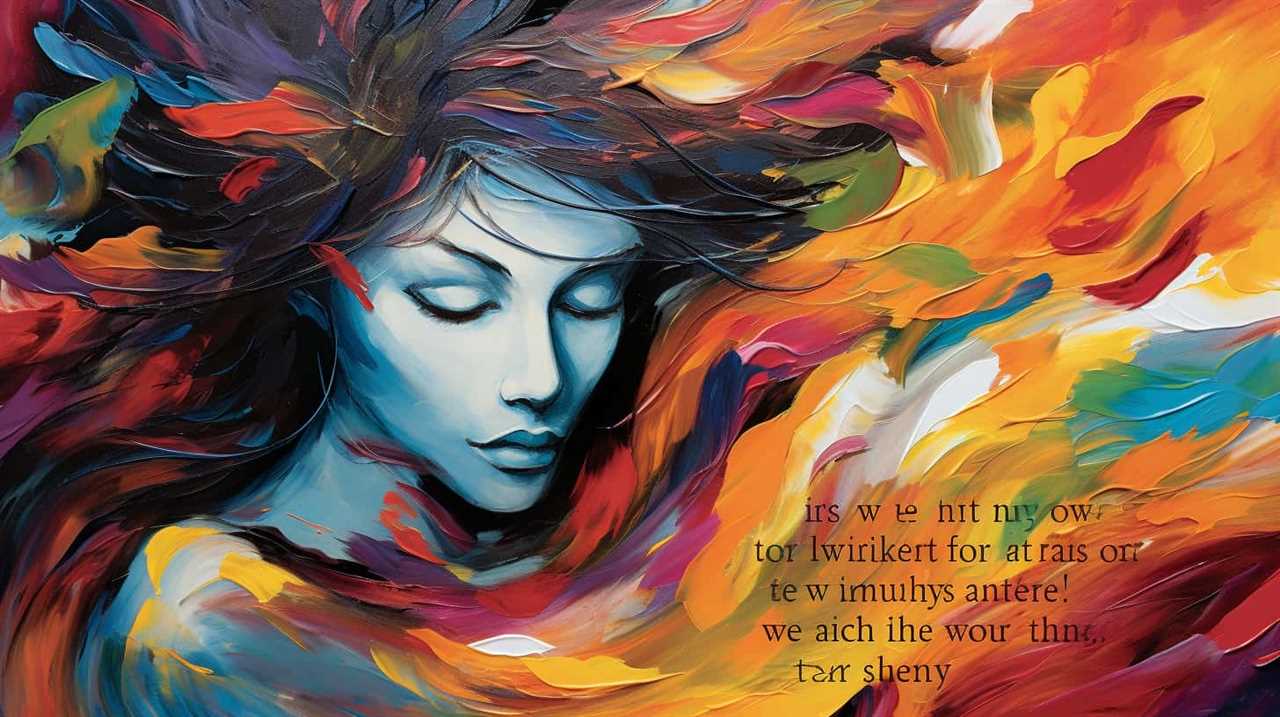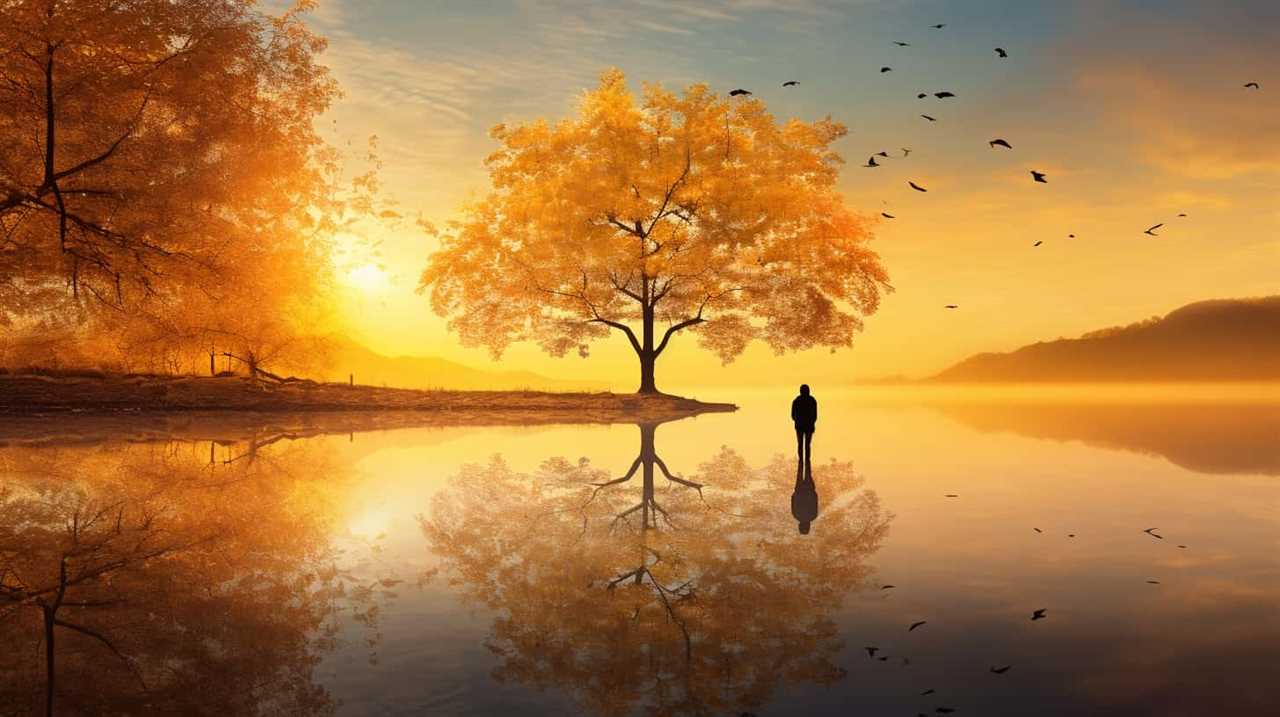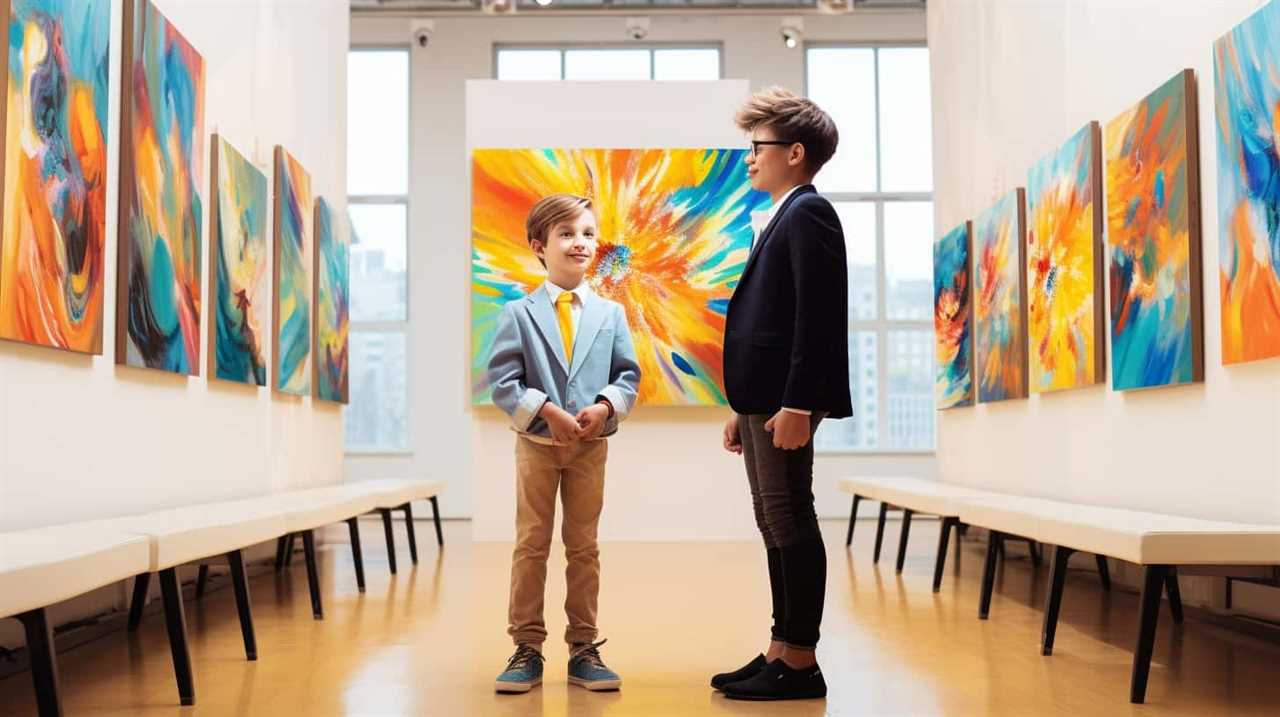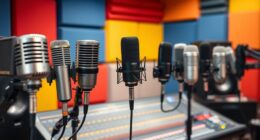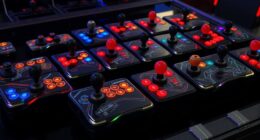Have you ever seen a breathtaking work of art that effortlessly combines the physical and digital worlds? Imagine a gallery brimming with colorful paintings, sculptures, and installations, all infused with the vibrant energy of digital technology. It’s a mesmerizing sight that mirrors the changing landscape of artistic creativity in today’s world.
As we, the collective of art enthusiasts and freedom-seekers, embrace technological advancements, we find ourselves diving deeper into the realm of digital art. Artists, driven by a burning curiosity, are exploring new mediums and pushing the boundaries of creativity.
Through the integration of digital tools into traditional art forms, we are witnessing a redefinition of ‘original’ art and engaging with a wider audience through digital platforms. This fusion of art and technology opens up a world of possibilities, and we are eager to explore every corner of it.
Key Takeaways
- Digital media allows artists to explore new techniques and push boundaries in their artistic expressions.
- The integration of digital tools with traditional art forms expands artistic horizons and challenges conventional notions of art.
- Blending digital media with fine arts creates innovative works and results in a diverse artistic landscape.
- Digital media offers increased accessibility, audience engagement, and opportunities for artists in the digital age.
Evolution of Artistic Expressions
We have witnessed a significant increase in the use of digital media in the fine arts, leading to a transformative evolution in artistic expressions. The evolution of digital art has had a profound impact on the way artists create and engage with their work. Technology has become an integral part of artistic processes, revolutionizing the way art is produced, shared, and experienced.
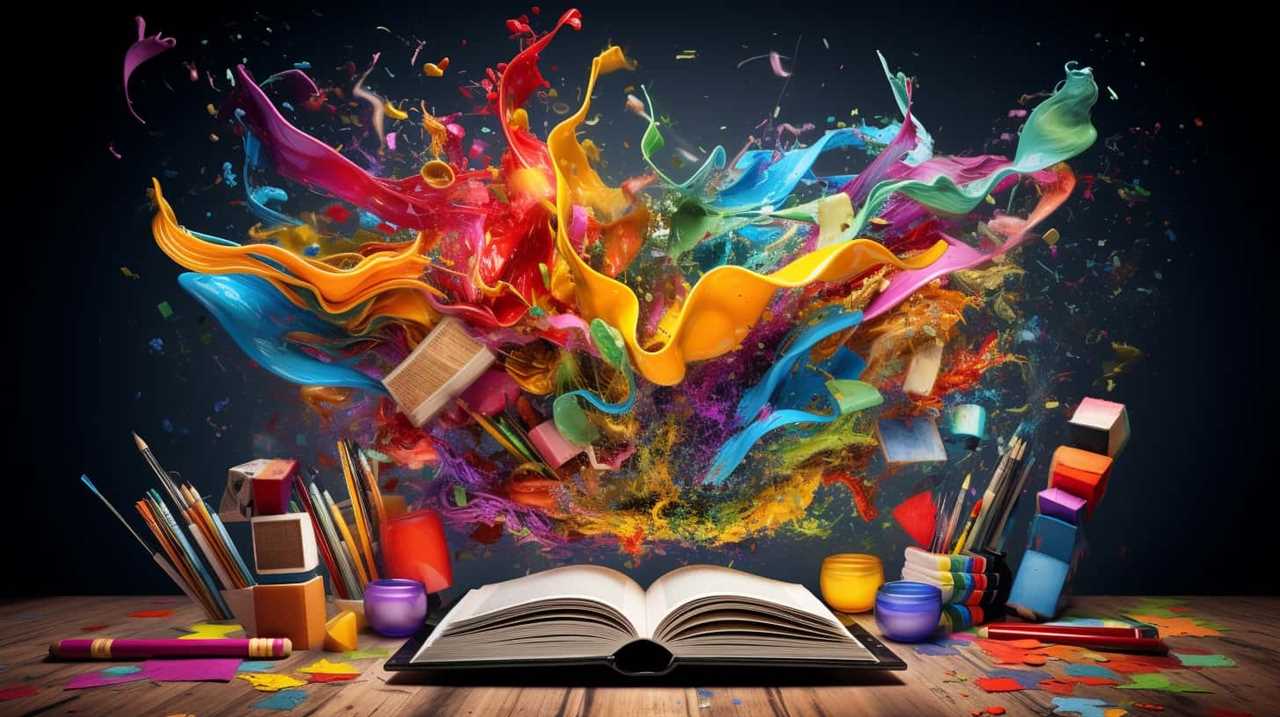
The advent of digital media has opened up a world of possibilities for artists, allowing them to explore new techniques and push the boundaries of traditional art forms. Digital tools and software have made it easier for artists to experiment with different styles, colors, and textures, enabling them to create intricate and complex artworks that were once unimaginable. This has led to a proliferation of unique and innovative artistic expressions that challenge conventional notions of art.
Moreover, the impact of technology on artistic processes goes beyond the creation of art itself. Digital media has revolutionized the way art is exhibited and consumed. Online platforms and social media have provided artists with a global platform to showcase their work and reach a wider audience. This has democratized the art world, breaking down barriers and allowing artists from all walks of life to share their stories and perspectives.
Embracing Technological Advancements
Embracing technological advancements allows us to further integrate digital media into the realm of fine arts. The integration of digital tools has had a profound impact on artistic processes, revolutionizing the way artists create and present their work. Digital technologies have opened up new possibilities for artists, enabling them to experiment with different mediums, explore innovative techniques, and push the boundaries of traditional art forms.
Digital tools have provided artists with a wide range of options for creating and manipulating their artwork. From digital painting to 3D modeling and virtual reality installations, artists now have access to a vast array of tools that enhance their creative expression. These tools not only offer greater control and precision but also enable artists to experiment with different styles and techniques that were previously inaccessible.
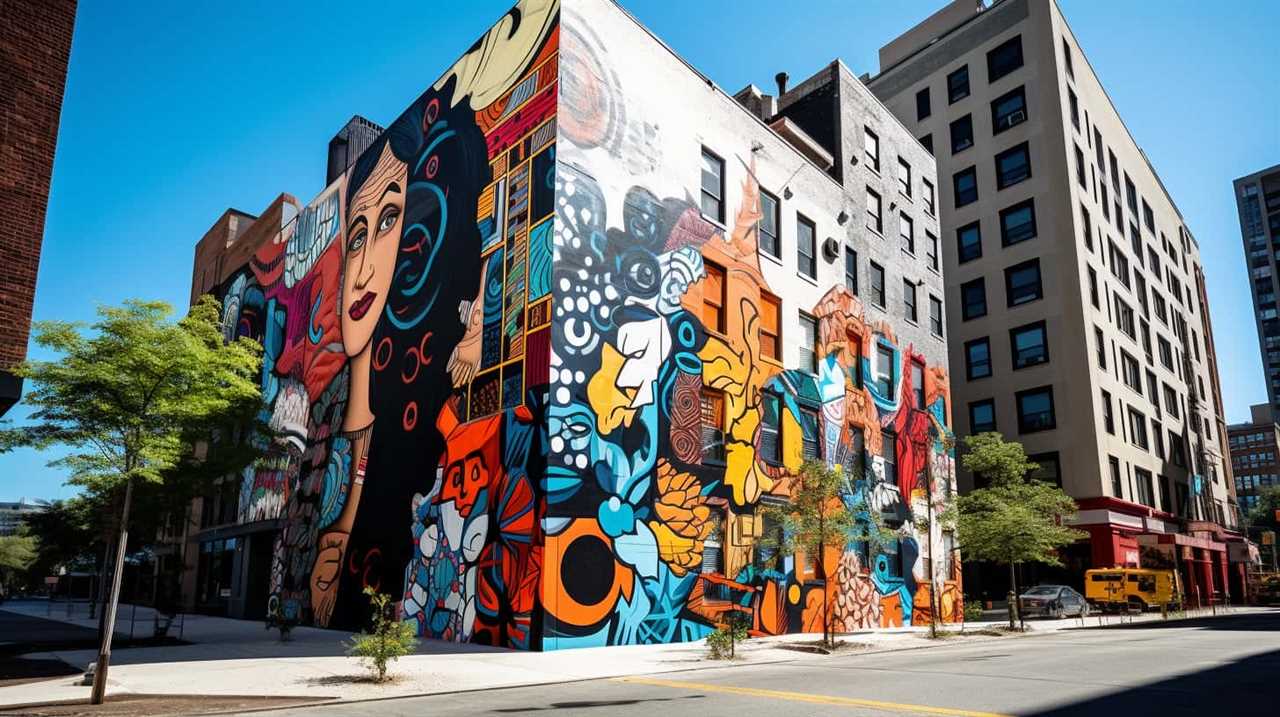
The impact of digital media on artistic processes extends beyond the creation stage. Digital platforms and social media have revolutionized the way artists showcase and promote their work. Artists can now reach a global audience with a single click, connecting with art enthusiasts and collectors from all over the world. This newfound accessibility has democratized the art world, allowing artists to break free from traditional gatekeepers and establish their own presence in the industry.
As artists embrace these technological advancements, they’re pushing the boundaries of what’s considered traditional art. In the next section, we’ll explore how artists are harnessing the power of digital mediums to create groundbreaking and immersive experiences for their audiences.
Artists Exploring Digital Mediums
One of the ways artists are expanding the boundaries of traditional art is by embracing digital mediums. Digital painting and interactive sculptures have become increasingly popular among contemporary artists as they explore new possibilities and push the limits of what art can be.
Digital painting allows artists to create works using digital tools and software, eliminating the need for physical materials like paint and brushes. This medium offers a range of possibilities, from realistic renderings to abstract and experimental styles. Artists can manipulate colors, textures, and layers with ease, exploring new techniques and pushing the boundaries of traditional painting.
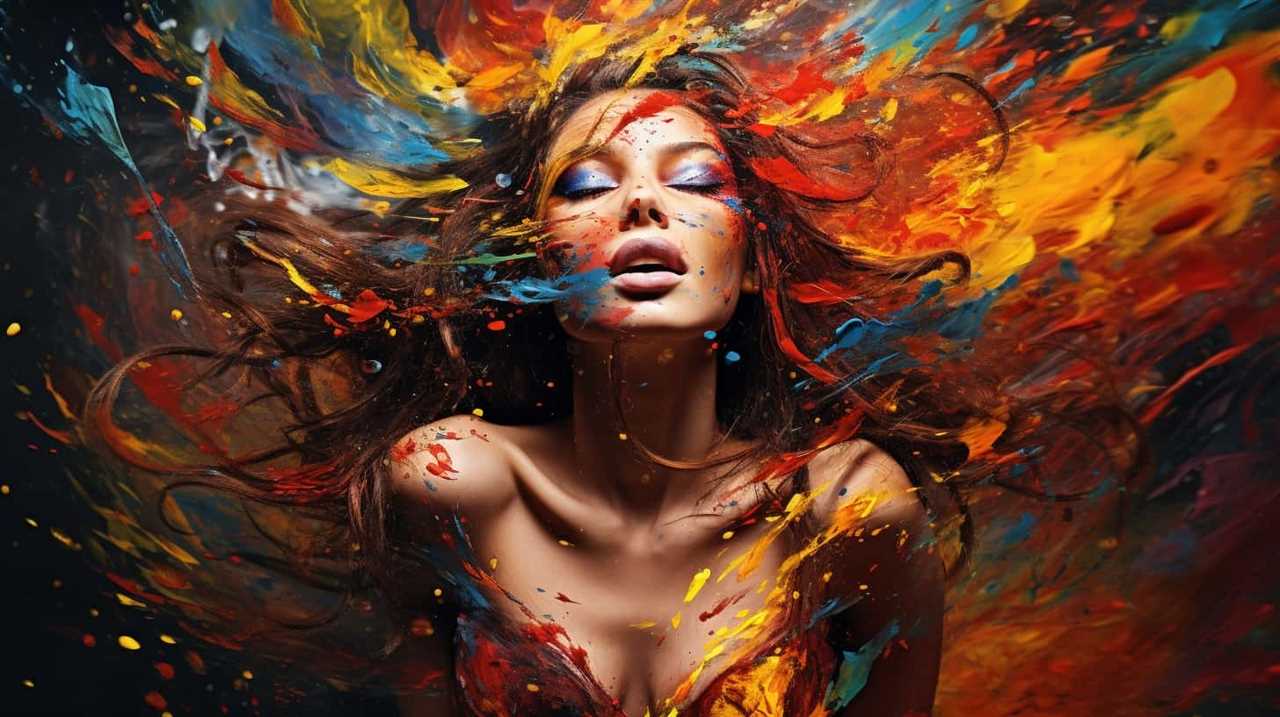
On the other hand, interactive sculptures combine traditional sculptural elements with digital technology, creating immersive and engaging experiences for viewers. These sculptures often incorporate sensors, lights, and sound, allowing viewers to interact with the artwork and become active participants in the creative process. This merging of physical and digital elements creates a dynamic and multidimensional art form that challenges traditional notions of sculpture.
Pushing the Boundaries of Creativity
As artists merge traditional mediums with digital technology, they’re expanding the horizons of artistic expression.
The blending of digital media with fine arts allows for the exploration of new possibilities and the creation of innovative works.
By pushing the boundaries of creativity, artists are able to experiment with different techniques, materials, and concepts.
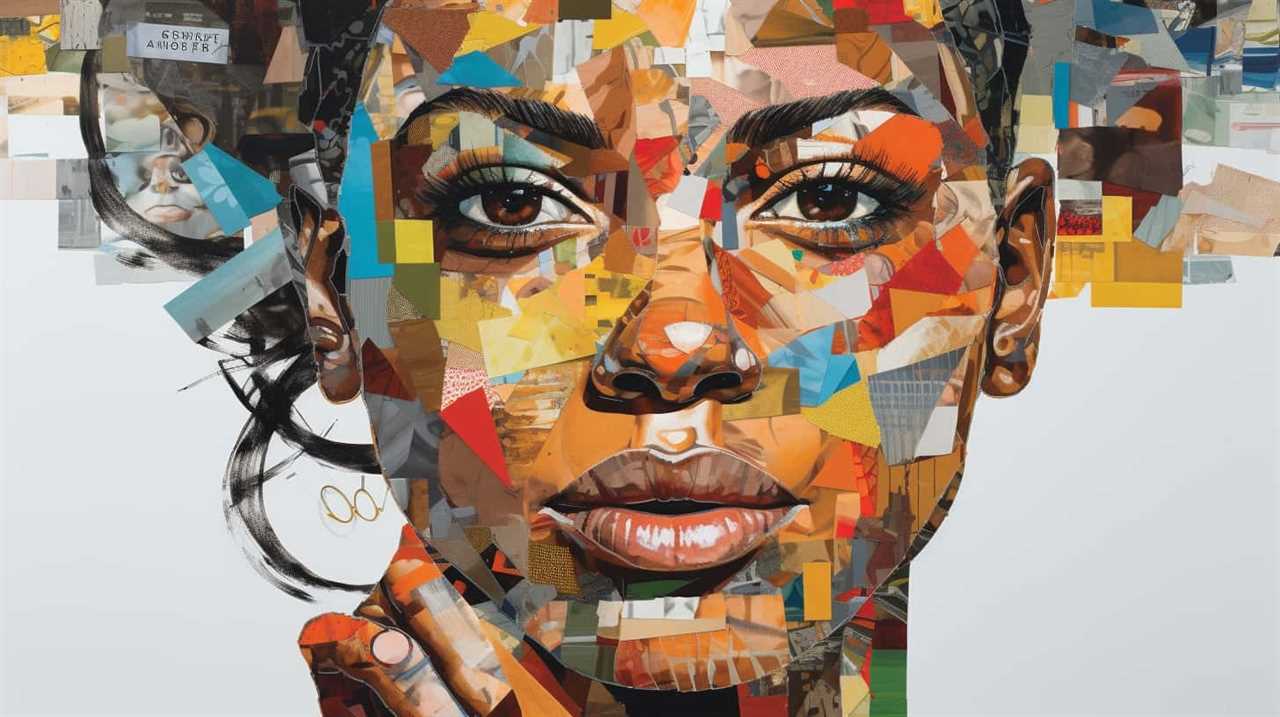
This results in a rich and diverse artistic landscape that challenges traditional notions of art.
Traditional Meets Digital
In our exploration of the blending of digital media with fine arts, we discover the exciting realm where traditional techniques intersect with digital tools, pushing the boundaries of creativity.
This convergence of the traditional and the digital allows artists to experiment with new possibilities, creating a fusion that challenges conventions and liberates their artistic expression.
By incorporating digital artistry into their work, artists can enhance their traditional techniques with the limitless potential of digital tools. Blending techniques such as mixed media, collage, and layering can be seamlessly integrated with digital manipulation, resulting in artworks that are visually captivating and conceptually rich.
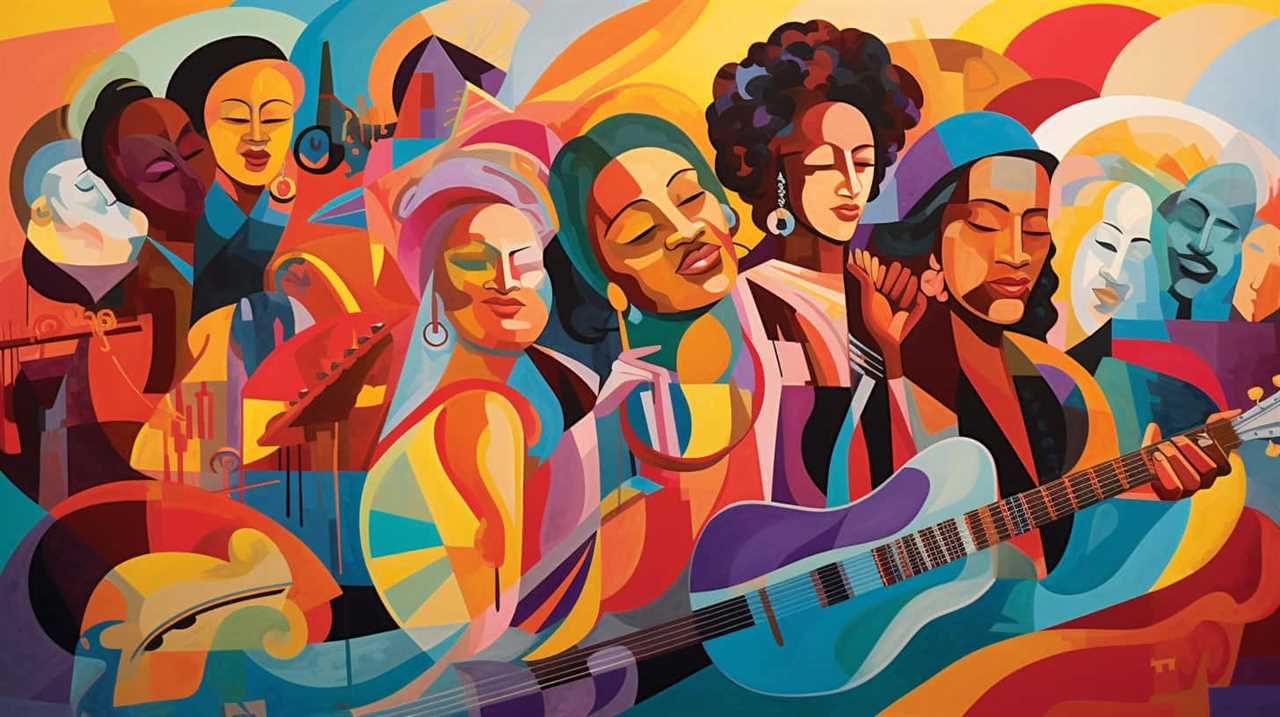
This combination of the traditional and the digital not only expands the artist’s creative repertoire but also opens up new avenues for artistic exploration, paving the way for innovative and boundary-pushing creations.
Expanding Artistic Horizons
By exploring the fusion of traditional and digital techniques, we can expand our artistic horizons and push the boundaries of creativity. The digital art revolution has opened up new possibilities for artists, allowing them to experiment with different mediums and techniques in ways that weren’t previously possible.
Here are three ways in which artists are expanding their artistic boundaries through the use of digital media:
- Blurring the line between reality and imagination: With digital tools, artists can create fantastical and otherworldly scenes that challenge our perception of what’s real. They can manipulate images, combine elements from different sources, and create new worlds that exist only in their imagination.
- Collaborating across disciplines: Digital media allows artists to collaborate with professionals from other fields such as technology, science, and design. This interdisciplinary approach leads to the creation of innovative and thought-provoking artworks that push the boundaries of traditional art forms.
- Engaging with interactive and immersive experiences: Digital art enables artists to create interactive and immersive experiences that actively engage the audience. Through the use of virtual reality, augmented reality, and interactive installations, artists can create multisensory experiences that blur the line between the artwork and the viewer, allowing for a more immersive and participatory artistic experience.
Innovating Creative Expression
We are constantly pushing the boundaries of creativity through the innovative use of digital media in fine arts. Digital artistry has revolutionized the way artists express themselves, allowing for a new level of technological creativity.
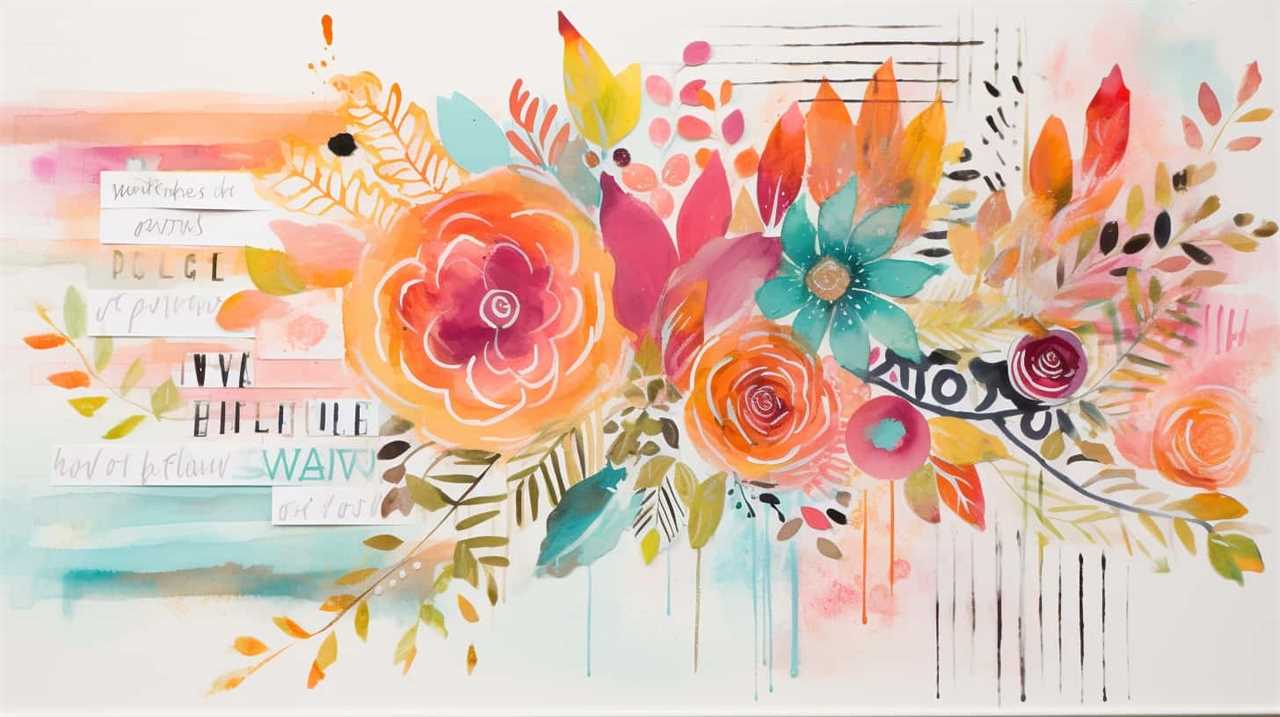
The integration of digital tools and techniques has opened up a whole new world of possibilities for artists, enabling them to explore and experiment with various mediums, techniques, and styles. With digital media, artists can seamlessly blend traditional art forms with digital elements, creating unique and captivating works that challenge traditional notions of artistic expression.
This fusion of technology and artistry hasn’t only expanded the scope of creative expression but has also given artists the freedom to explore new dimensions and push the limits of their imagination. The result is a dynamic and ever-evolving art scene where innovation and experimentation thrive.
Integration of Digital Tools in Traditional Art Forms
By integrating digital tools into traditional art forms, we’re able to enhance visual storytelling in ways that were previously unimaginable. These tools allow artists to push the boundaries of their creativity and explore new artistic possibilities.
Moreover, the integration of digital technology in traditional art forms bridges the gap between the old and the new, creating a dynamic and exciting fusion of techniques and mediums.
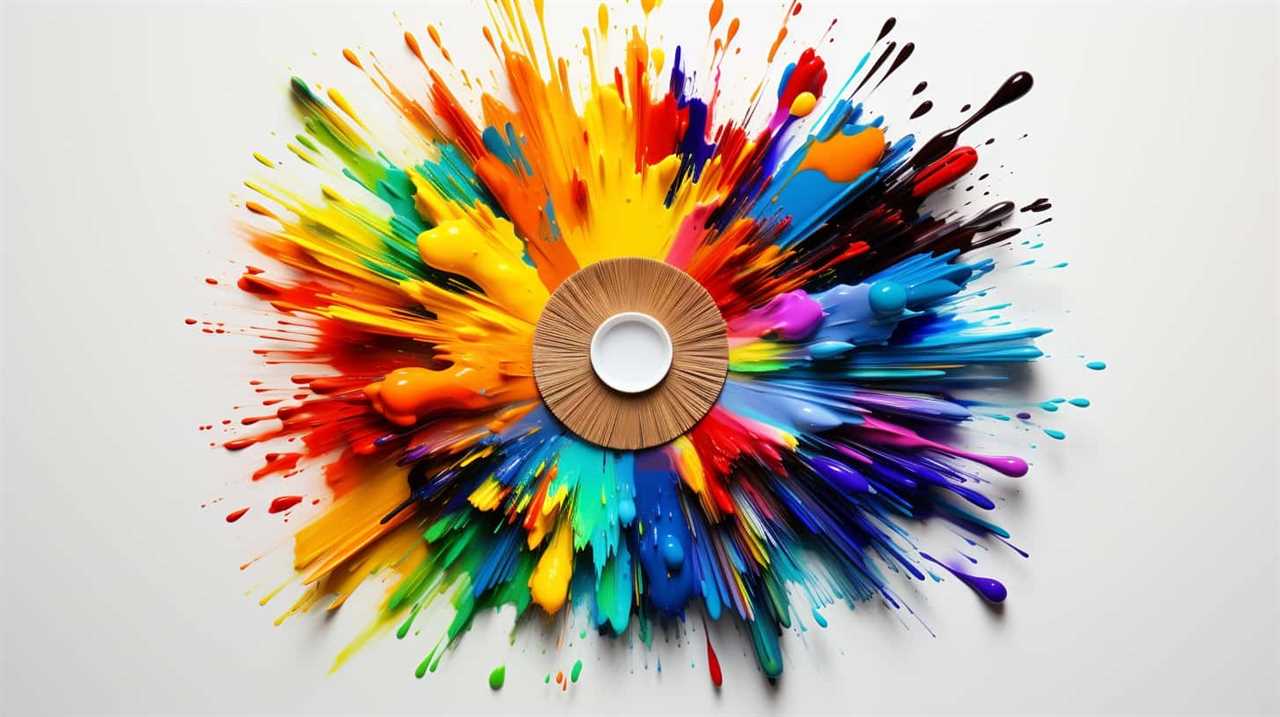
Enhancing Visual Storytelling
In our exploration of enhancing visual storytelling, we witness the seamless integration of digital tools into traditional art forms. This fusion allows for the creation of evocative imagery and the development of multimedia storytelling experiences.
Here are three ways in which digital tools are enhancing visual storytelling:
- Augmented Reality (AR): By overlaying digital elements onto the physical world, AR enhances the viewer’s perception of reality and adds layers of meaning to traditional art forms. It enables artists to create immersive and interactive experiences that captivate and engage the audience.
- Digital Animation: With the use of digital animation techniques, artists can bring their artwork to life, adding movement and dynamism. This allows for a more dynamic and engaging storytelling experience, as the audience can witness the transformation of static images into living narratives.
- Interactive Installations: The integration of digital tools in traditional art forms has given rise to interactive installations. These installations invite the audience to actively engage with the artwork, becoming a part of the narrative and shaping the storytelling experience themselves.
Expanding Artistic Possibilities
As we delve deeper into the integration of digital tools in traditional art forms, we discover an expansion of artistic possibilities that allows for the creation of innovative and immersive visual experiences.
The boundaries between traditional and digital art are blurring, and this convergence is giving birth to a new era of artistic expression. Technological innovations have enabled artists to push the limits of their creativity, bridging the gap between the physical and digital worlds.
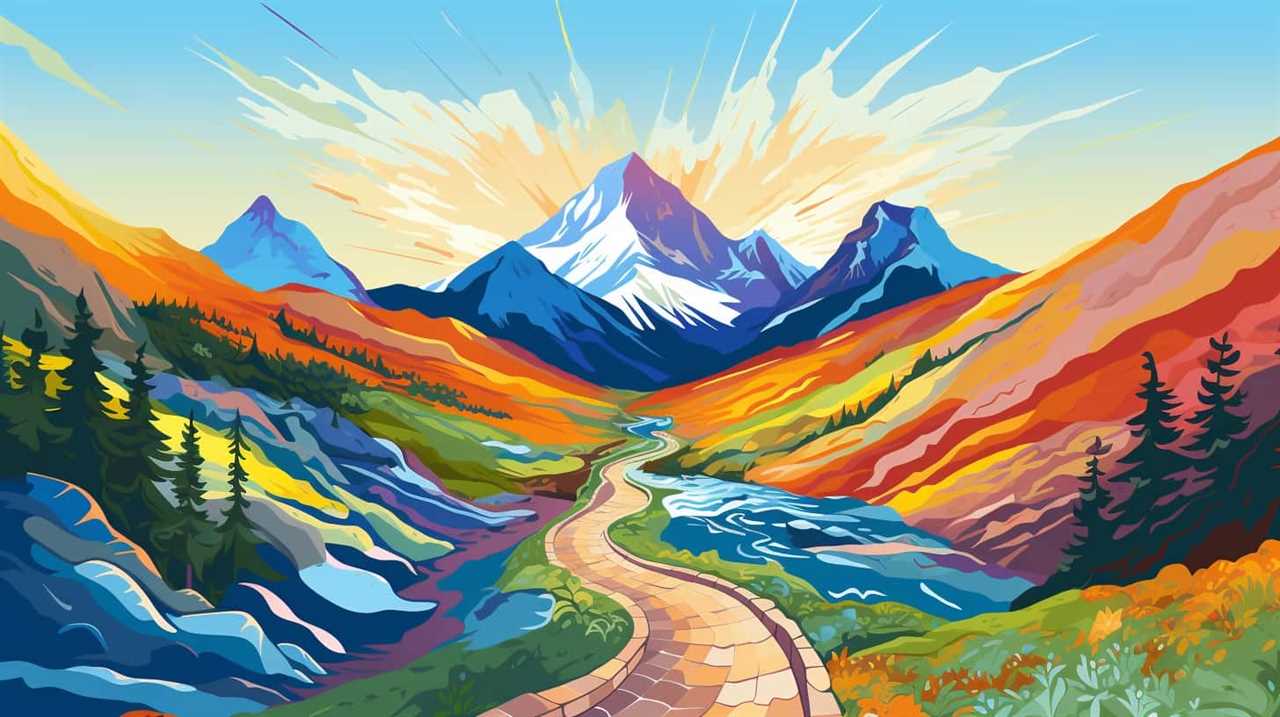
With the integration of digital tools, artists can now experiment with different mediums, techniques, and styles, resulting in artworks that are both visually captivating and conceptually rich. The use of digital tools not only enhances the artistic process but also provides a platform for artists to engage with their audience in new and exciting ways, breaking free from the constraints of traditional art forms.
This integration of digital tools in traditional art forms is transforming the art world, opening up endless possibilities for artists to explore and redefine the boundaries of creativity. With the blurring of boundaries and the advent of technological innovations, the stage is set for an unprecedented fusion of old and new, as traditional art forms embrace the digital age.
Bridging Old and New
With the integration of digital tools, we’ve expanded our artistic possibilities, bridging the gap between traditional and digital art forms. The blurring boundaries between the two worlds have given rise to a new era of creativity.
Here are three ways in which digital transformation has revolutionized traditional art forms:
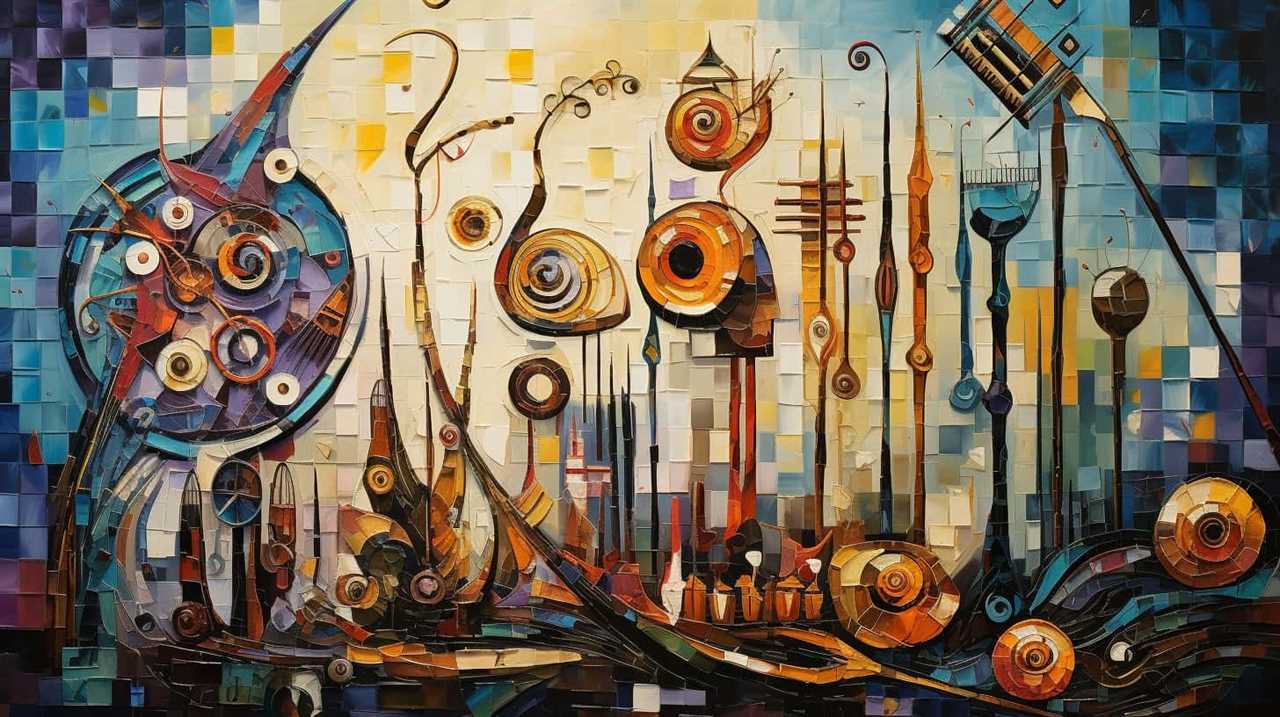
- Enhanced Techniques: Digital tools allow artists to explore new techniques and experiment with different styles, pushing the boundaries of traditional art forms. From digital painting to 3D sculpting, these tools enable artists to achieve effects that were once unimaginable.
- Collaborative Potential: Digital platforms provide an avenue for artists to collaborate and connect with others, breaking down geographical barriers. This allows for the exchange of ideas and perspectives, fostering a global artistic community.
- Preservation and Accessibility: Digital tools provide a means to preserve traditional art forms and make them accessible to a wider audience. Through digital platforms and online galleries, artworks can now be shared and appreciated by people worldwide.
As digital tools continue to revolutionize traditional art forms, they also open the doors to new opportunities for artistic expression. Transitioning into the next section, we’ll explore how digital media has become a new medium for artists to convey their message and emotions.
Digital Media as a New Medium for Expression
Digital media has become a transformative tool for artists to express their creativity. In the midst of the digital media revolution, traditional techniques are being impacted in profound ways. Artists are now able to explore new possibilities and push the boundaries of their artistic practice with the use of digital tools.
The advent of digital media has opened up a whole new world of artistic expression. Artists are no longer confined to traditional mediums such as paint, canvas, and sculpture. They now have access to a vast array of digital tools and software that allows them to experiment with different techniques and mediums. This has led to a fusion of traditional and digital art forms, creating a rich and dynamic visual landscape.
One of the key advantages of digital media is its versatility. Artists can easily manipulate and edit their work, allowing for greater precision and control over the creative process. They can experiment with different colors, textures, and effects, creating unique and innovative artworks. Digital media also allows for greater accessibility and distribution of art, as it can be easily shared and viewed online.
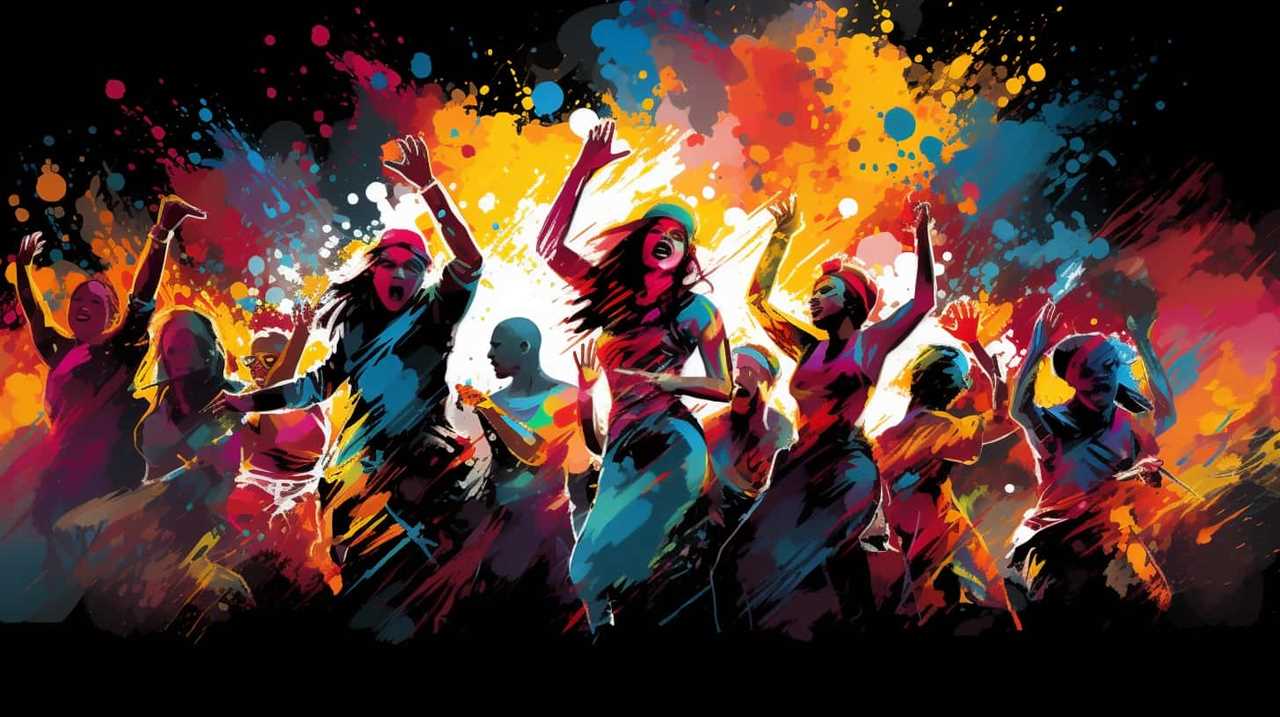
However, the rise of digital media has also raised questions about the impact on traditional techniques. Some argue that the use of digital tools can lead to a loss of craftsmanship and skill. Others see it as an opportunity to push the boundaries of traditional art and explore new possibilities.
Ultimately, the integration of digital media into the artistic landscape has given artists a new medium for expression, one that offers endless possibilities for creativity and innovation.
Impact of Technology on Artistic Processes
How does technology impact the artistic processes of creators in the digital media and fine arts landscape? The impact of technology on artistic processes is undeniable, bringing both opportunities and challenges to artists in their creative journey. Here are three ways in which technology is revolutionizing the art world:
- Impact of AI on artistic processes: Artificial Intelligence (AI) is transforming the way artists create. With AI-powered tools, artists can automate repetitive tasks, generate ideas, and explore new creative possibilities. AI algorithms can analyze vast amounts of data, helping artists uncover patterns and trends that inspire their work. Moreover, AI can assist in the creation of artworks, generating images, music, and even poetry. This fusion of human creativity with AI capabilities opens up new frontiers for artistic expression.
- Use of virtual reality in art creation: Virtual reality (VR) technology has emerged as a powerful tool for artists to immerse themselves and their audience in unique and interactive experiences. Through VR, artists can create virtual worlds, sculptures, and installations, allowing viewers to engage with art in unprecedented ways. VR technology provides artists with the ability to transcend physical limitations and explore limitless possibilities, blurring the boundaries between the real and the virtual.
- Enhanced collaboration and accessibility: Technology has facilitated collaboration among artists, enabling them to work together remotely and share ideas effortlessly. Online platforms and digital tools have made it easier for artists to connect, collaborate, and showcase their work to a global audience. Additionally, technology has increased accessibility to art, making it more inclusive and reaching a wider range of people. Online galleries, digital exhibitions, and virtual tours have made art more accessible to individuals who may not have had the opportunity to experience it otherwise.
Transforming the Art Viewing Experience
As technology continues to advance, it has transformed the way we experience art. Interactive exhibits have emerged as a way to enhance engagement, allowing viewers to actively participate and interact with the artwork.
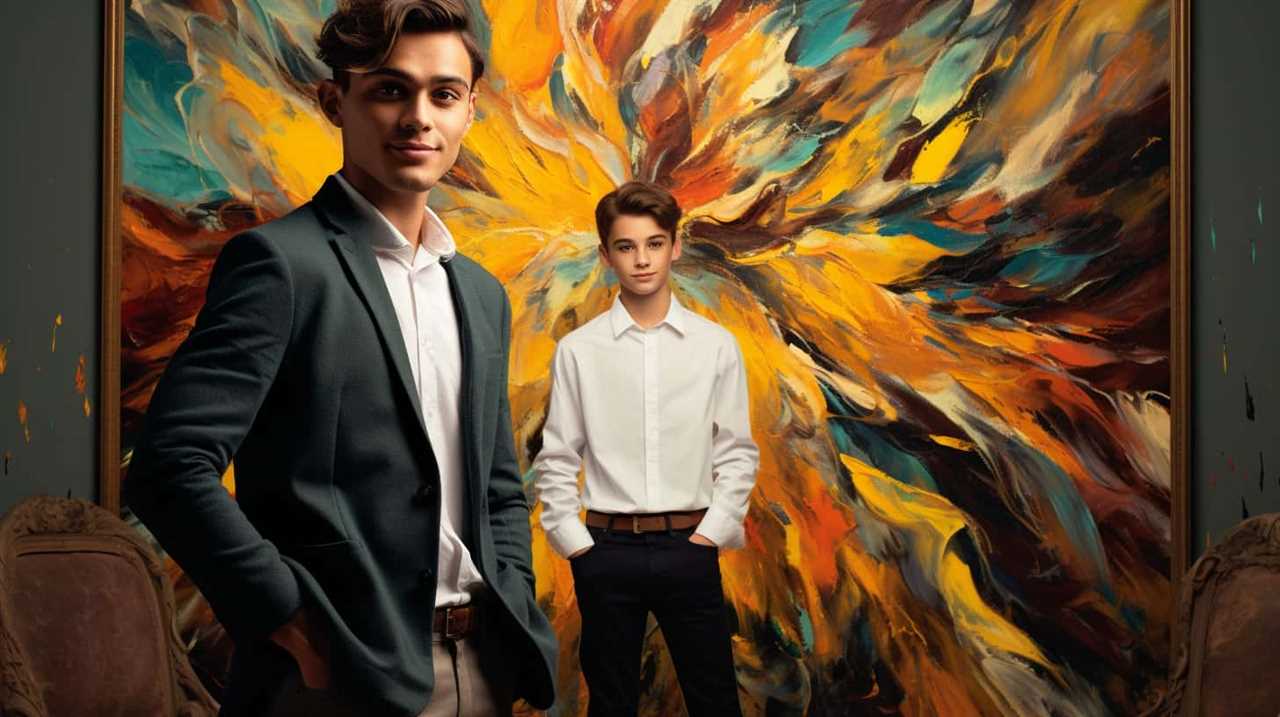
This not only creates a more immersive experience but also fosters a deeper understanding and appreciation for the artistic process.
Additionally, virtual reality has opened up new possibilities in the art world, offering viewers the opportunity to step into a virtual realm and explore artworks in a truly immersive and interactive way.
Interactive Exhibits: Enhancing Engagement
In our exploration of the blending of digital media with fine arts, we dive into the transformative power of interactive exhibits in enhancing engagement and revolutionizing the art viewing experience. Interactive installations are becoming increasingly prevalent in galleries and museums, providing a dynamic and immersive encounter with art.
Here are three ways in which interactive exhibits are enhancing engagement:
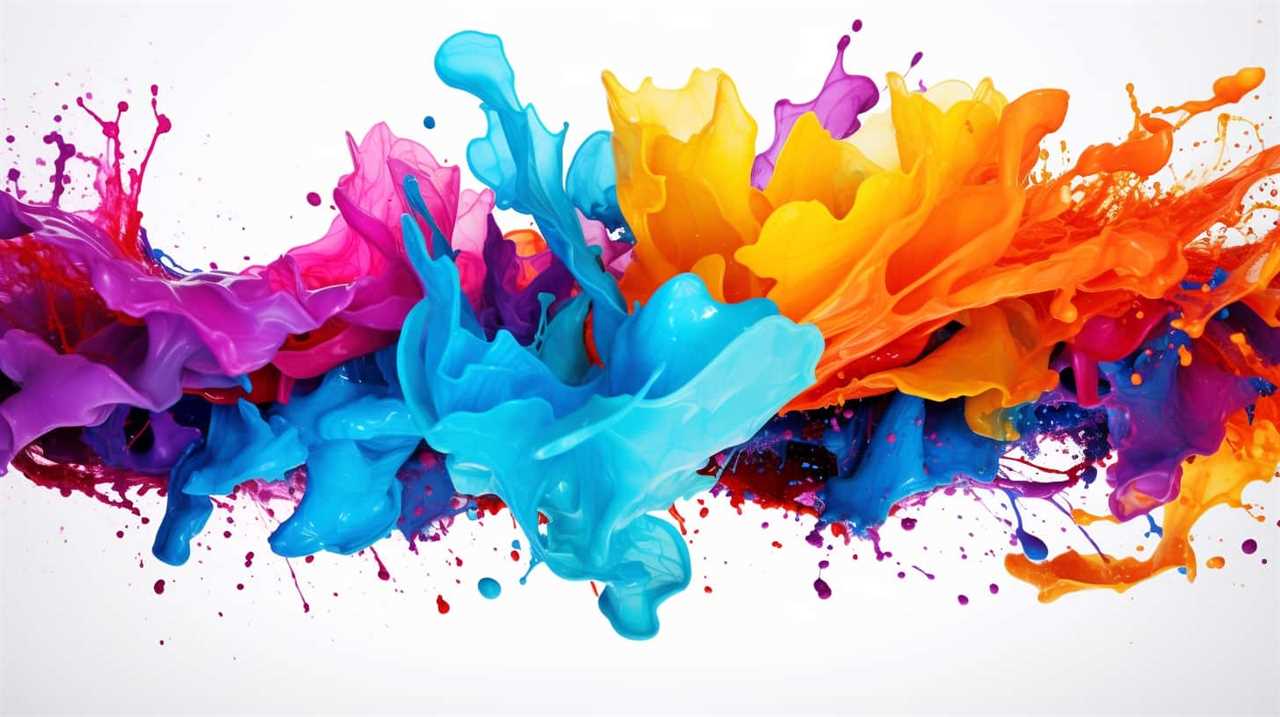
- Active participation: Unlike traditional static artworks, interactive installations invite viewers to actively engage with the piece. Whether it’s touching, moving, or manipulating the artwork, this hands-on experience allows for a deeper connection and a more personal interpretation.
- Multi-sensory experience: Interactive exhibits often incorporate various sensory elements, such as sound, light, and even scent, to create a multi-dimensional experience. This stimulates multiple senses, making the artwork more immersive and memorable.
- Customizable exploration: Interactive exhibits allow viewers to dictate their own journey through the artwork. By offering choices and options, visitors can tailor their experience based on their interests and preferences, fostering a sense of empowerment and freedom.
Through enhancing interactivity, interactive installations are revolutionizing the way we engage with and appreciate art, creating a liberating and transformative experience for all.
Virtual Reality: Immersive Experiences
Virtual reality has revolutionized the art viewing experience by immersing us in a world of endless possibilities. Through immersive storytelling and virtual art exhibitions, artists can now create interactive and dynamic experiences that transport us beyond the confines of a traditional gallery. With virtual reality, we can step into a painting and explore its every detail, or be transported to far-off places and witness art in its natural context.
This technology has the power to break down the barriers between the viewer and the artwork, allowing for a deeper and more personal connection. By providing an immersive experience, virtual reality transforms the way we engage with art, making it more accessible, engaging, and inclusive.
As we delve into the challenges and opportunities that artists face in this digital age, virtual reality holds the potential to redefine the boundaries of art and unleash new forms of creativity.
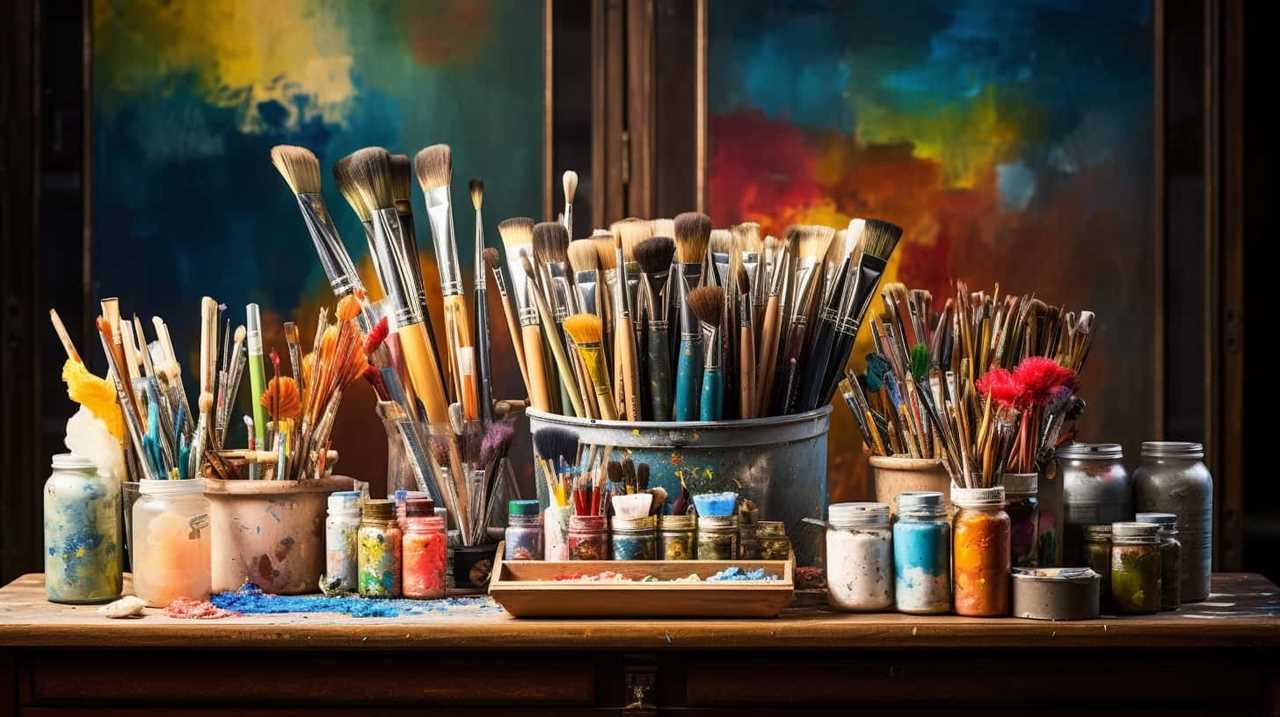
Challenges and Opportunities for Artists
We are constantly faced with the task of adapting to the challenges and seizing the opportunities that digital media brings to the world of fine arts. As artists, we find ourselves exploring new techniques and navigating the digital landscape. This ever-evolving landscape presents both challenges and opportunities for us to push the boundaries of our creativity and connect with audiences in new and exciting ways.
- Challenges:
- Technical proficiency: With the integration of digital media, artists need to develop new skills and knowledge to effectively utilize digital tools and software.
- Authenticity and originality: The digital realm offers endless possibilities, but it also creates the challenge of maintaining artistic integrity and originality in a world of easily replicable content.
- Overcoming resistance: Some traditionalists may resist the integration of digital media, posing challenges for artists who seek to explore new avenues of expression.
- Opportunities:
- Increased accessibility: Digital media allows artists to reach a wider audience and share their work globally, breaking down geographical barriers.
- Experimentation and collaboration: The digital landscape encourages artists to experiment with different mediums and collaborate with other artists, leading to innovative and multidisciplinary artworks.
- Enhanced interactivity: Digital media provides opportunities for audience engagement and interaction, creating immersive experiences that blur the line between art and viewer.
As artists, we must embrace these challenges and seize the opportunities presented by digital media. By doing so, we can continue to push the boundaries of our art, connect with audiences in new ways, and shape the future of fine arts.
Redefining the Notion of ‘Original’ Art
As artists, our constant exploration of new techniques and navigation of the digital landscape frequently challenge our understanding of the notion of ‘original’ art. In the traditional sense, ‘original’ art refers to a one-of-a-kind physical artwork, handcrafted by the artist. However, the rise of digital media has reimagined the concept of authenticity, blurring the lines between digital and traditional art forms.
| Traditional Art | Digital Art |
|---|---|
| Limited physical copies | Infinite digital copies |
| Tangible and tactile experience | Immersive multimedia experience |
| Time-consuming creation process | Efficient and versatile creation process |
The dichotomy between digital and traditional art is not a matter of superiority, but rather a shift in perspective. Digital art allows for the democratization of artistic expression, with the ability to reach a wider audience through digital platforms. It challenges the exclusivity of the art world, providing opportunities for artists who may not have had access to traditional art mediums.
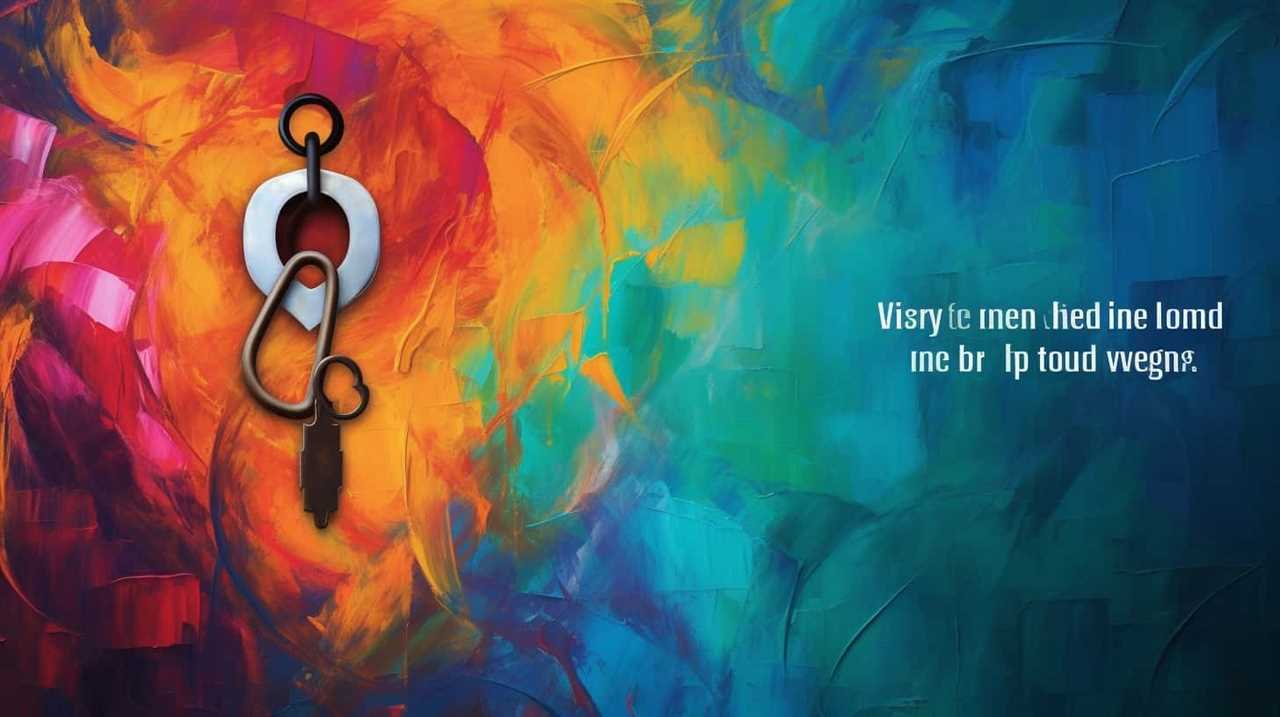
By embracing digital art, artists redefine the notion of ‘original’ art. It is no longer confined to physicality, but rather encompasses the unique expression and vision of the artist. As we continue to navigate the digital landscape, we are constantly reevaluating and redefining what it means to be an artist in the 21st century.
Transition: Engaging with a wider audience through digital platforms not only expands our reach, but also opens up new possibilities for collaborative and interactive art experiences.
Engaging With a Wider Audience Through Digital Platforms
One of the key advantages of digital media blending with fine arts is the ability to connect with a larger audience through digital platforms. This expansion of reach allows artists to share their work with people from all over the world, breaking down geographical boundaries and reaching individuals who may not have had the opportunity to experience fine arts before.
The use of digital platforms also opens up new possibilities for interactive experiences. Artists can now create immersive installations that combine traditional artistic techniques with digital technologies, enabling viewers to actively engage with the artwork. This interactivity enhances the audience’s experience and creates a more dynamic and participatory relationship between the viewer and the artwork.
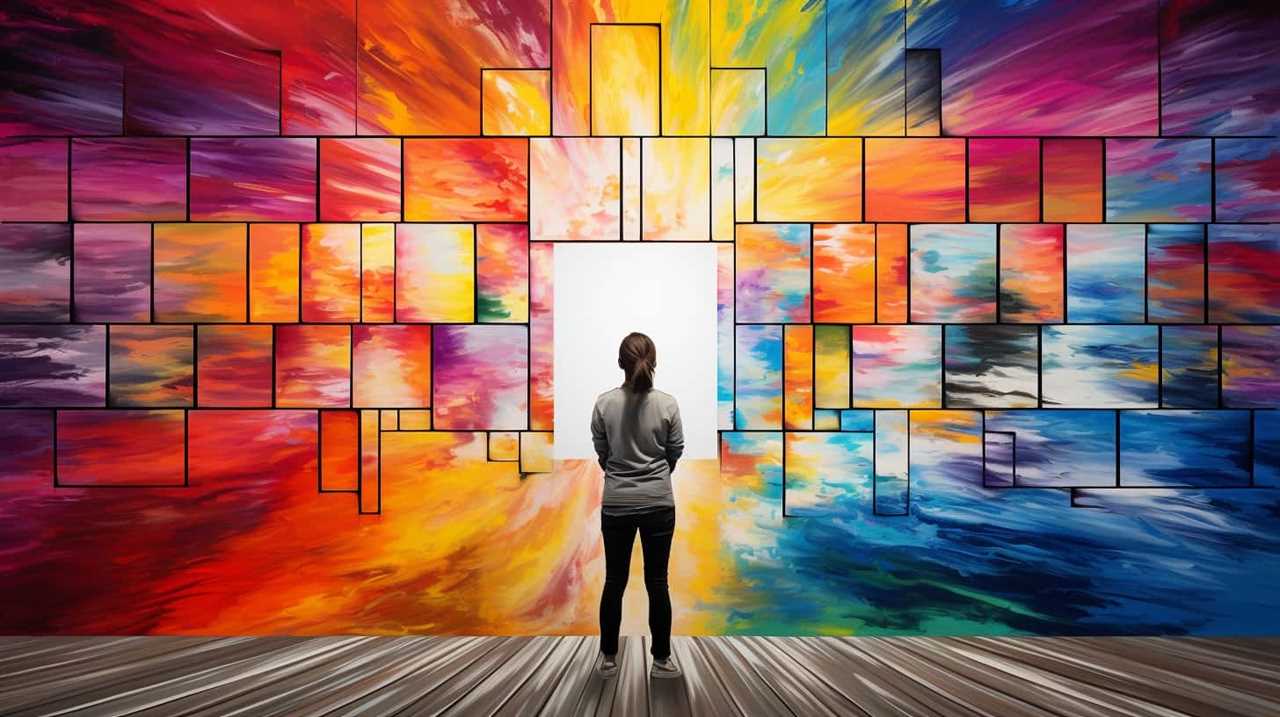
Moreover, digital platforms provide artists with the opportunity to showcase their work in a way that’s easily accessible and shareable. Social media platforms, online galleries, and virtual exhibitions allow artists to reach a wider audience and gain more visibility for their work. This increased exposure can lead to new opportunities, collaborations, and recognition within the art world.
Exploring the Fusion of Art and Technology
The fusion of art and technology offers exciting possibilities for creative exploration and innovation. This intersection between the traditional and the digital worlds has given rise to a new form of artistic expression known as digital artistry. It allows artists to push the boundaries of what’s possible and create works that were previously unimaginable.
Exploring innovation in the realm of digital artistry involves experimenting with various technological tools and techniques. For instance, artists can utilize virtual reality (VR) and augmented reality (AR) to immerse viewers in their creations, blurring the lines between the physical and digital realms. They can also employ generative algorithms and artificial intelligence to generate unique and ever-evolving artworks.
The fusion of art and technology enables artists to reach a wider audience and engage with them on a deeper level. With the advent of social media and online platforms, artists can now showcase their work to a global audience, breaking free from the limitations of physical galleries. This liberation allows for greater accessibility and democratization of art, as anyone with an internet connection can appreciate and interact with digital artworks.
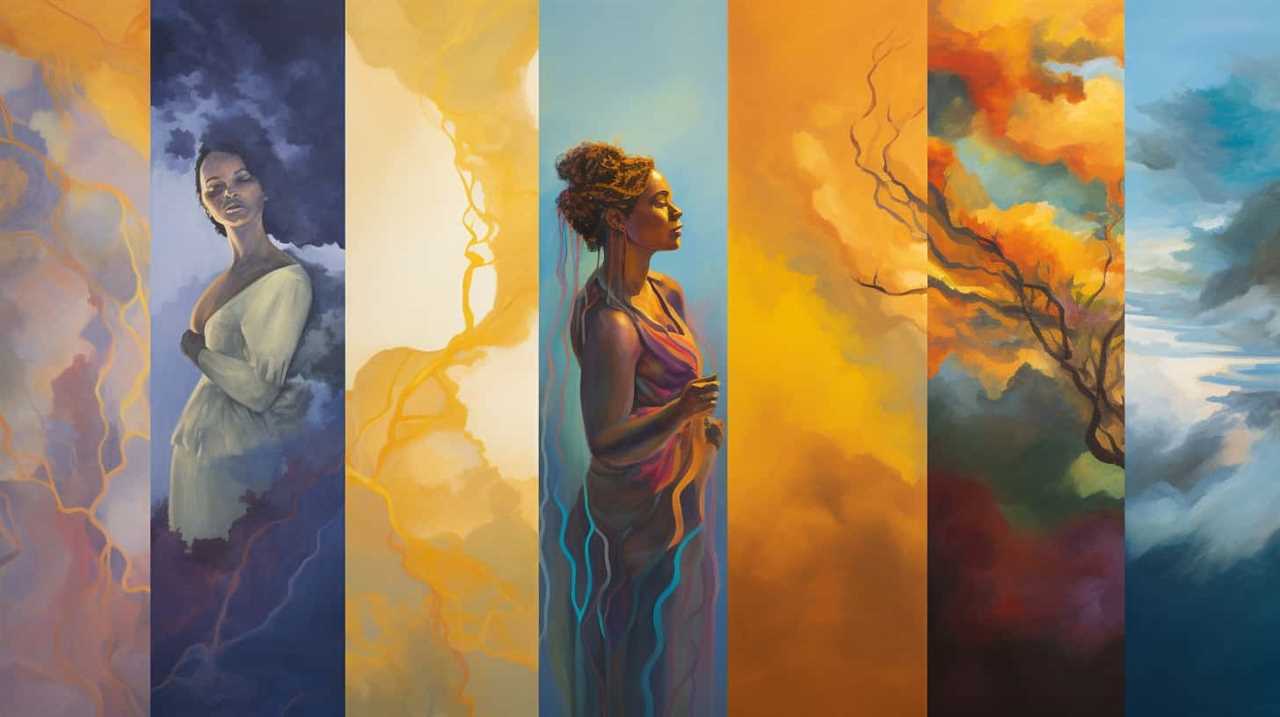
Future Possibilities and Trends in Digital Art and Fine Arts
Exploring the future possibilities and trends in digital art and fine arts involves embracing emerging technologies and incorporating them into our creative processes. As evolving art forms, digital art and fine arts have the potential to revolutionize the way we perceive and engage with art.
Here are three key trends and opportunities that are shaping the digital art market:
- Virtual Reality (VR) and Augmented Reality (AR): VR and AR technologies offer immersive experiences that can transport viewers into new artistic dimensions. Artists have the opportunity to create interactive installations and exhibitions, blurring the boundaries between the physical and digital worlds.
- NFTs and Blockchain: Non-fungible tokens (NFTs) have opened up new avenues for artists to monetize their digital creations. This technology allows artists to prove ownership, authenticity, and scarcity of their artwork, creating a digital art market that was previously inaccessible.
- Artificial Intelligence (AI) and Machine Learning: AI has the potential to revolutionize the creative process, enabling artists to explore new techniques and styles. Artists can use AI algorithms to generate unique artworks, analyze data to gain insights, and experiment with new artistic possibilities.
These trends present exciting opportunities for artists to push the boundaries of traditional art forms and explore the limitless possibilities of the digital realm. By embracing these technologies, artists can tap into a global digital art market and reach a wider audience, creating new avenues for artistic expression and innovation.
Frequently Asked Questions
How Has the Integration of Digital Tools in Traditional Art Forms Impacted the Art-Making Process?
The integration of digital tools in traditional art forms has revolutionized the art-making process. It has allowed artists to explore new techniques, expand their creative boundaries, and create dynamic, interactive art pieces that captivate and engage audiences in unprecedented ways.
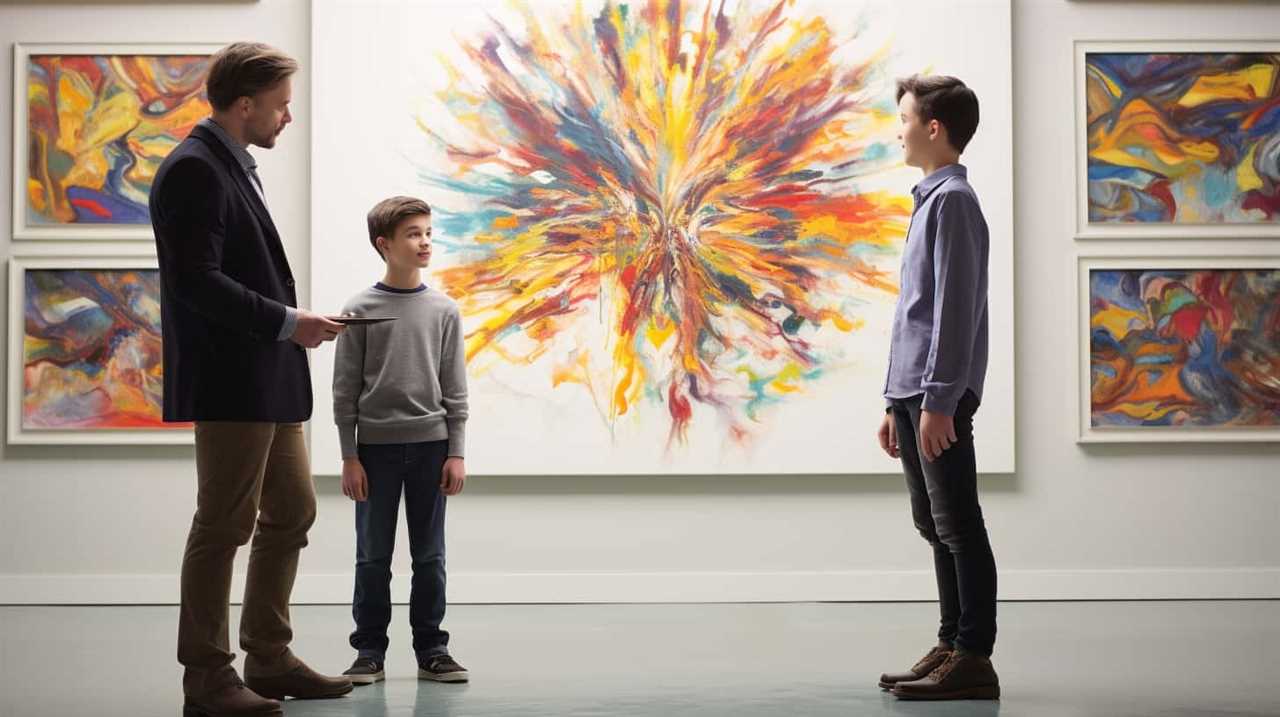
What Are the Challenges and Opportunities That Artists Face When Exploring Digital Mediums?
Exploring digital mediums presents artists with both challenges and opportunities. The challenges include mastering new technology, adapting traditional skills, and navigating copyright issues. On the other hand, digital mediums offer artists limitless creative possibilities and global exposure.
How Has Technology Transformed the Art Viewing Experience?
Technology has revolutionized the art viewing experience, with virtual reality experiences and interactive art exhibitions becoming increasingly prevalent. These advancements offer a sense of liberation, allowing us to explore art in immersive and transformative ways.
How Has the Fusion of Art and Technology Affected the Notion of ‘Original’ Art?
The fusion of art and technology has revolutionized the concept of ‘original’ art, blurring the boundaries between traditional mediums and digital creations. This integration has had a profound impact on the notion of authenticity and the artistic process.
What Are Some Future Possibilities and Trends in the Field of Digital Art and Fine Arts?
In the field of digital art and fine arts, we can expect to see exciting future possibilities and trends. Virtual reality art and interactive installations are emerging as innovative mediums that blur the boundaries between the digital and physical realms.
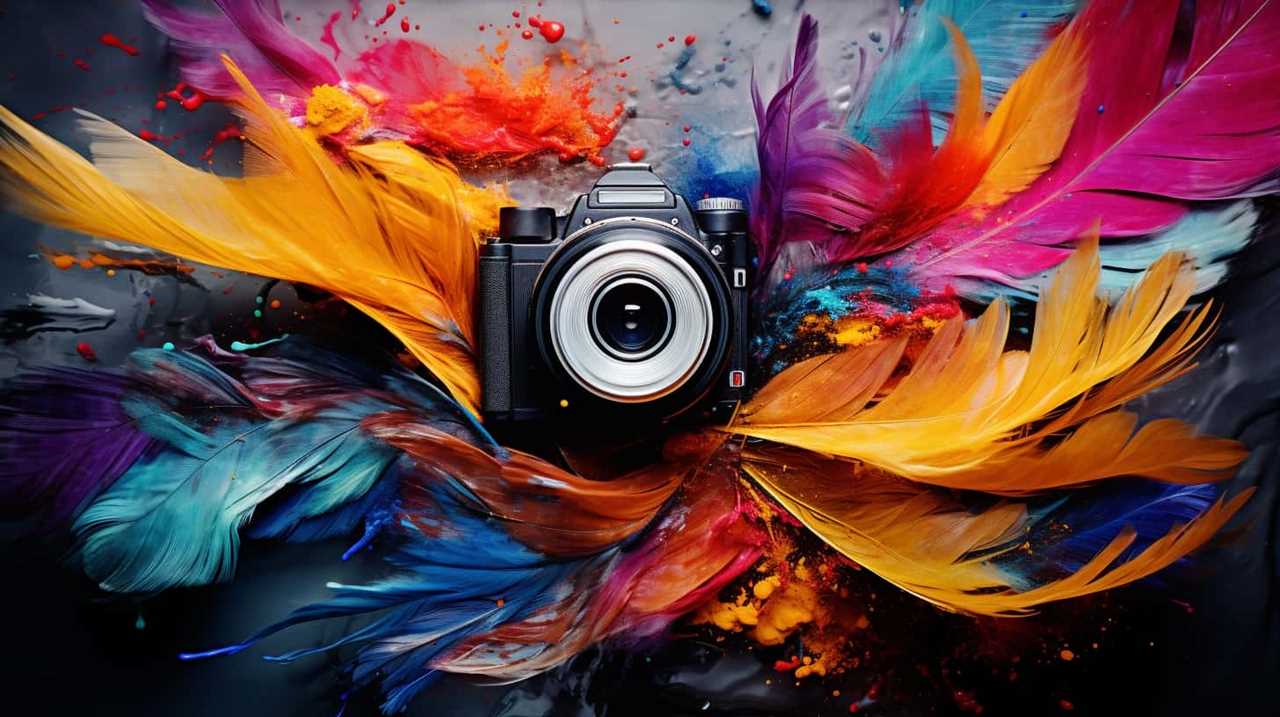
Conclusion
In a world where brushstrokes and pixels converge, the blending of digital media with fine arts has become an allegory for the boundless possibilities of creativity. As artists embrace technological advancements and push the boundaries of traditional art forms, they redefine the notion of ‘original’ art and engage with a wider audience through digital platforms.
This fusion of art and technology opens up a realm of future possibilities and trends, where imagination knows no limits. The evolution of artistic expressions continues to shape our world in mesmerizing ways.
Lauren’s talent in writing is matched by her passion for storytelling. Her love for books and deep understanding of culture and entertainment add a distinct flavor to her work. As our media and press contact, Lauren skillfully bridges the gap between afterQuotes and the broader media landscape, bringing our message to a wider audience.
